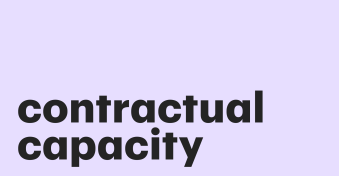Contract riders are often crucial elements of legal agreements.
They serve as supplemental documents that contain specific terms, conditions, or modifications.
Understanding how to effectively utilize and draft them can enhance clarity, flexibility, and precision in contractual arrangements.
Key takeaways:
- Contract riders offer a method to customize and amend agreements, providing a way to address specific aspects not comprehensively covered in the main contract.
- Real-world examples of contract riders range from entertainment industry contracts to real estate agreements stipulating unique conditions for property transactions.
- While both riders and addenda serve to modify contracts, the former are often more integrated and are viewed as part of the overall agreement (addenda are typically standalone documents that are appended later).
What is a rider in a contract?
So, what is a contract rider?
Put simply, it’s a supplementary document attached to the main contract.
It adds, modifies, or clarifies specific terms, conditions, or provisions of the agreement.
The parties involved in a contract may use a rider agreement to highlight specific circumstances or requirements that the language of the existing contract doesn’t adequately address.
Ergo, a rider adds customization and flexibility to the contract, enabling parties to tailor the agreement to better suit their needs while maintaining its integrity.
Riders are often used to accommodate special circumstances, contingencies, or additional details that might arise during negotiations or after the primary contract generation process has taken place.
Real-world examples of contract riders
Here are some real-world examples of contract riders and their applications in different industries.
1. Entertainment
Artist performance riders
In the music industry, a performance rider may be added to a contract for a concert or event.
This might include details such as technical requirements for sound and lighting, dressing room specifications, hospitality provisions, and specific requests from the artist.
Film production riders
In the film industry, a rider might be attached to an actor’s contract to outline certain conditions for their involvement.
This could include stipulations about on-set accommodation, makeup and wardrobe preferences, transportation arrangements, and any special requirements the actor has.
2. Real estate
Home sale riders
For a real estate transaction, a rider might be used to specify additional terms related to the sale of a property.
This could include contingencies such as repairs that need to be completed before closing, specific appliances or fixtures included in the sale, or unique financing arrangements.
Lease amendment riders
For a rental agreement, a rider might be added to modify certain terms of the lease.
For instance, if a tenant requires permission to have a pet, a pet policy rider may be attached to the lease detailing the rules and responsibilities related to that animal.
4. Sports
Athlete’s performance incentive riders
In professional sports contracts, riders might include performance-based incentives — for example, bonuses an athlete will receive based on achieving specific milestones, like scoring a certain number of goals or making it to playoffs.
How to write a contract rider
Writing a rider involves careful consideration and precise contract terminology to ensure any modifications align seamlessly with the main document.
Here’s a step-by-step guide on how to draft one.
1. Understand the main contract
Familiarize yourself with the main contract to identify areas that require additional detail, modification, or clarification.
Ensure the rider you’re drafting complements and does not contradict the existing terms.
2. Specify its purpose and the parties
Begin the rider by clearly stating its purpose and context.
Identify the parties involved (by referencing their names as mentioned in the main contract) and provide a brief explanation of why the rider is being added.
3. Outline the modifications
Detail the changes or additions you want to make to the main contract.
Use clear and concise language to avoid ambiguity.
Specify which sections, clauses, or provisions are affected by the rider.
4. Be precise and specific
Clearly define the new terms, conditions, or obligations the rider is introducing.
Use specific language and avoid vague terms that could lead to misinterpretation.
5. Cross-reference
Ensure the rider refers to the relevant sections of the main contract where modifications are being made.
This helps parties to easily understand how the rider interacts with the existing agreement.
6. Use a consistent style
Maintain the same formatting, numbering, and style used in the main contract to ensure a cohesive and professional appearance.
Consistency will help readers navigate the document smoothly.
7. Consider legal language
Depending on the complexity and formality of the contract, you might want to consult legal experts or use standard legal language to ensure accuracy and enforceability.
8. Review for clarity and precision
After drafting the rider, review it carefully to ensure each modification is clear, logical, and aligns with the main contract’s purpose.
Ambiguities or contradictions should be eliminated.
9. Seek legal review
Consider having the rider reviewed by legal experts to make sure it’s compliant, valid and effective, especially if the contract is legally binding or has significant implications.
10. Date and signatures
Conclude the rider with spaces for the parties’ signatures and the date of execution.
Signing indicates that all parties have agreed to the modifications outlined in the rider.
11. Attach it to the main contract
Once the rider is complete, attach it to the main contract.
It will then become part of the overall agreement and should be referred to whenever the main contract is invoked.
Remember, a well-drafted contract rider enhances clarity and avoids disputes by addressing issues that might not have been adequately covered in the main contract.
It can be key to ensuring precision, coherence, and legal validity when you execute an agreement.
What’s the difference between a contract rider and a contract addendum?
Both contract riders and addenda are supplementary documents used to modify or expand the terms of a contract.
Yet, as we mentioned earlier, there are subtle differences between the two.
Contract riders
Integration with the main contract
A rider is often more integrated and interconnected with the contract.
It modifies specific sections, clauses, or provisions and is meant to be read together with the contract to fully understand the agreement.
Specificity
Riders are typically used to address specific points, conditions, or contingencies that arise during negotiations or after the main contract has been drafted.
They’re narrower in scope than an addendum and often tailored to certain unique circumstances.
Cross-referencing
Riders commonly cross-reference sections of the main contract they’re modifying, ensuring readers can easily identify where changes have been made.
Contract addenda
A stand-alone document
A contract addendum is a separate, stand-alone document that can be appended to the contract.
It may be used to modify or add terms without directly altering the language of the agreement.
General or comprehensive
Addendums can also be broader in scope and might include several modifications or additions.
They may modify the entire contract or address overarching terms that affect multiple sections.
Independent execution
In some cases, an addendum might be signed and executed separately from the main contract.
This can be particularly useful if parties want to modify the agreement without revising the entirety of the original contract.
Examples
Addenda can be used to update terms like pricing, delivery schedules, or payment methods in a contract or to add new terms that affect various sections of the main agreement.
The key difference between riders and addenda lies in the level of integration and the scope of changes.
A rider tends to be closely tied to the main contract, focusing on specific points, while an addendum can stand alone and may address more comprehensive changes or additions.
The choice between using a rider or an addendum depends on the complexity of the modifications that need to be made and the desired relationship between the supplementary document and the main contract.
Contract rider template
Now you know all about contract riders and why you need them, let’s take a look at a sample rider for the entertainment industry.
This template provides a framework for addressing performance details, technical requirements, accommodations, and other entertainment-specific considerations.
[Your company/artist’s/band’s letterhead]
ENTERTAINMENT CONTRACT RIDER
Date: [Date]
Parties:
– [Entertainment provider/artist/band name]
– [Venue/event organizer name]
Main Entertainment Contract: [Main contract title or reference]
Date of Main Contract: [Date of main contract]
This entertainment contract rider (“rider”) is hereby entered into between [entertainment provider/artist/band name] and [venue/event organizer name] (collectively referred to as the “parties”) as a supplement to the main entertainment contract referenced above.
1. Purpose of the Rider:
The purpose of this rider is to specify additional terms and requirements for the performance or entertainment services outlined in the main contract.
2. Performance Details:
The parties agree to the following performance details and requirements:
– Date of Performance: [Date]
– Time of Performance: [Time]
– Venue: [Venue name and address]
– Technical Requirements: [Sound, lighting, staging, and other technical specifications.]
3. Hospitality and Accommodations:
[The entertainment provider/artist/band] requests the following hospitality and accommodations:
– Dressing Room(s) with the following amenities: [List amenities]
– Meals: [Details about meals and dietary preferences]
– Transportation: [Transportation arrangements if applicable]
4. Additional Agreements:
Both parties agree to the following additional agreements:
– Merchandising: [Details about merchandise sales and revenue sharing if applicable]
– Soundcheck: [Soundcheck timing and requirements if applicable]
– Special Requests: [Any other special requests or considerations]
5. Compensation:
Compensation for the performance shall be in accordance with the terms specified in the main contract.
6. Entire Agreement:
Except as modified by this rider, all other terms and conditions of the main entertainment contract remain in full force and effect.
IN WITNESS WHEREOF, the parties hereto have executed this entertainment contract rider as of the date written above.
[Entertainment provider/artist/band signature] [Venue/event organizer signature]
By: ___________________________ By: ___________________________
Name: _________________________ Name: _________________________
Title: __________________________ Title: __________________________
Date: ___________________________ Date: ___________________________
[Additional signature lines if necessary]
Depending on your exact requirements, you might need to modify or expand this template.
For example, a rider to a contract of sale for a plot of land will look quite different from the one above.
You might also need to add the artist’s sound equipment requirements under contract rider specifications.
This would be to ensure the technical aspects of the performance are all meticulously catered to.
Manage your contracts effectively with PandaDoc
When drafting contracts, precision is key, and streamlining this process is essential for creating a binding and robust agreement.
Enter PandaDoc’s contract management software — a dynamic solution that revolutionizes how contracts are created, edited, and monitored.
PandaDoc offers an intuitive platform that simplifies every step of the contract journey.
Its user-friendly interface, customizable templates, and collaboration features streamline drafting and ensure more effective contract creation.
With PandaDoc, creating contract riders, incorporating addenda, and securing e-signatures become effortless, all without sacrificing legality or compliance.
Disclaimer
PandaDoc is not a law firm, or a substitute for an attorney or law firm. This page is not intended to and does not provide legal advice. Should you have legal questions on the validity of e-signatures or digital signatures and the enforceability thereof, please consult with an attorney or law firm. Use of PandaDocs services are governed by our Terms of Use and Privacy Policy.


